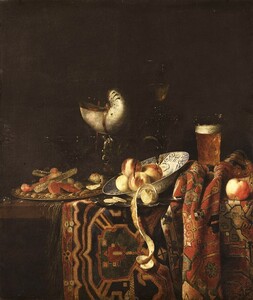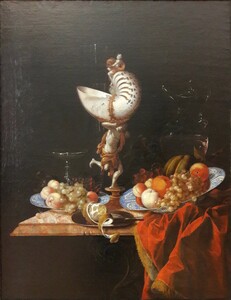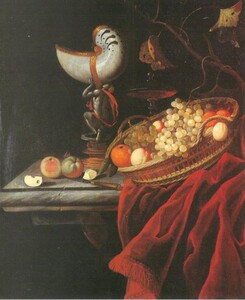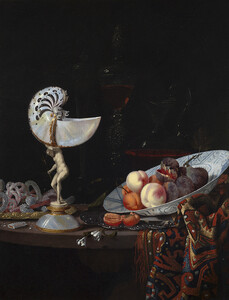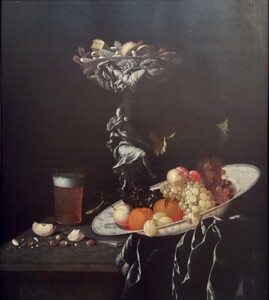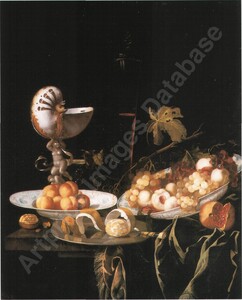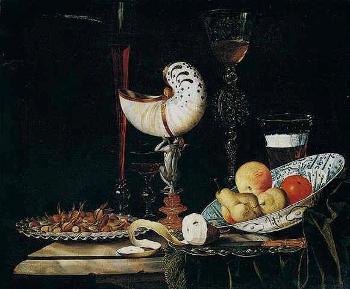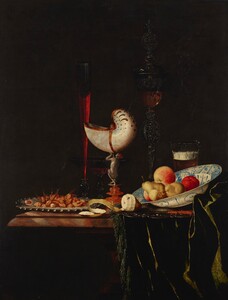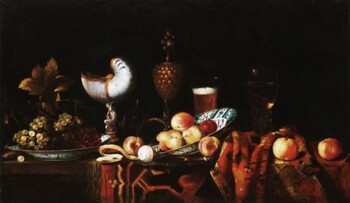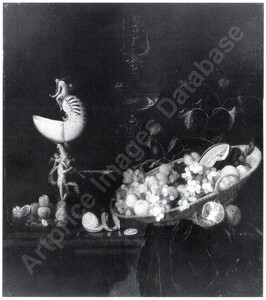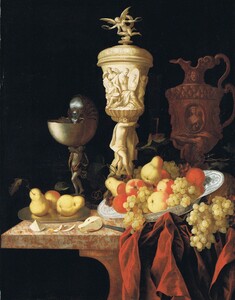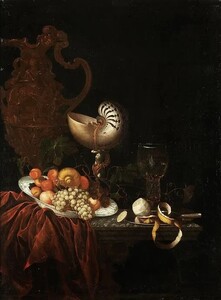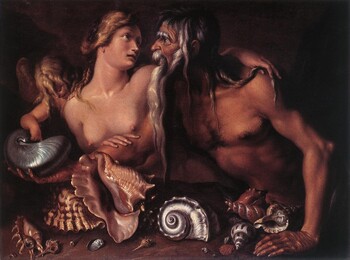Georg Hainz
Still life with a nautilus cup
Oil on canvas : 113 X 94,5 cm
Signed bottom left “G. Hinz”
Amsterdam, Rijksmuseum
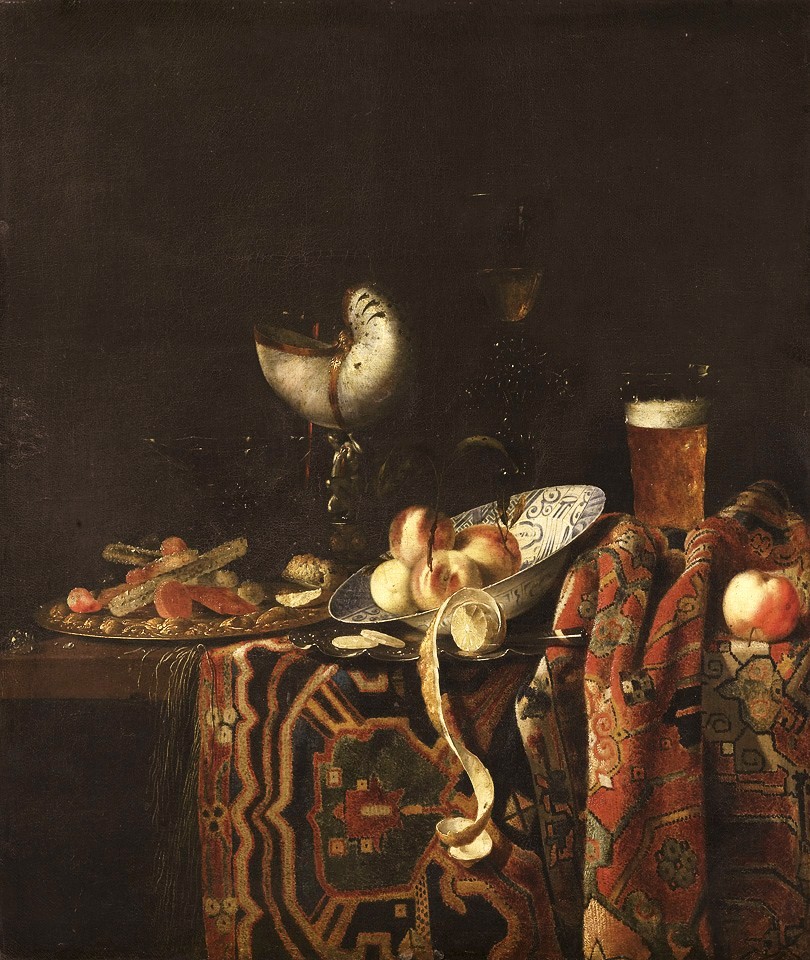
In short
Georg Hainz was an important 17th century still life painter in the German harbour town of Hamburg. Many of his still lifes hold a nautilus cup, which can therefore easily be considered as his favourite prop.
About Georg Hainz
German painter
Altona (near Hamburg) circa 1630/1631– 1688 Hamburg
Sometimes called “Johann(es) Georg Hinz”.
Still life painter.
His earliest dated still lifes are from 1665.
Hainz was mostly active in Hamburg. Although he became citizen here in 1668, he got accepted in the Painter’s Guild of Hamburg only in 1682, after a lengthy trial from 1667 until 1681.
The famous German painter and writer Joachim von Sandrart praised him as "Meister in stilligenden Sachen" ("master in motionless objects").
Hainz had two famous students, both born in Hamburg: Christian Berentz and Ernst Stuven.
In 1672, Hainz was active in Leipzig, where he painted mainly portraits.
Hainz painted in the Dutch still life tradition of the seventeenth century. He was especially influenced by Jan Jansz. van de Velde III (Haarlem 1620 – 1662 Enkhuizen) and also by Johannes Fris (Amsterdam circa 1627 – 1672 Amsterdam).
He painted several collector’s cabinets with precious objects of art. Examples of these paintings are kept in the Statens Museum for Kunst, Copenhagen, Staatliche Museen zu Berlin, the palace of Sanssouci in Potsdam, the castle of Reichenau, the castle of Friedenstein in Gotha, and in the Kunsthalle, Hamburg. At the time, it was a royal passion to put together collections of "naturalia et artificialia" and to display them on shelves in "Kunstkammer" ("art cabinets").
Hainz often used real objects as models for his paintings. All these still lifes with luxury objects may be interpreted as Vanitas displays.
About our painting
Hainz loved displaying precious objects in his still lifes. He frequently relied on a similar compositional scheme: the combination on a partly draped table of fruit in a Chinese Wan-Li porcelain dish with a nautilus shell mounted in an elaborate cup. The Nautilus Pompilus shell ranked amongst the most popular naturalia in a cabinet of curiosities. These shells were imported from Eastern India, Southern China and from the Indian Ocean by the Dutch East Indies Company, which used the port of Hamburg as their Northern staple port.
Within easy range of Hamburg existed in those days several so-called Wunderkamer collections. One of these was just outside Hamburg, in Wedel: it was the collection of the poet Johann Rist.
Why should you buy this painting?
Because it is such an elegant and playful Baroque still life, holding the most mysterious of all shells: the Nautilus Pompilus.

